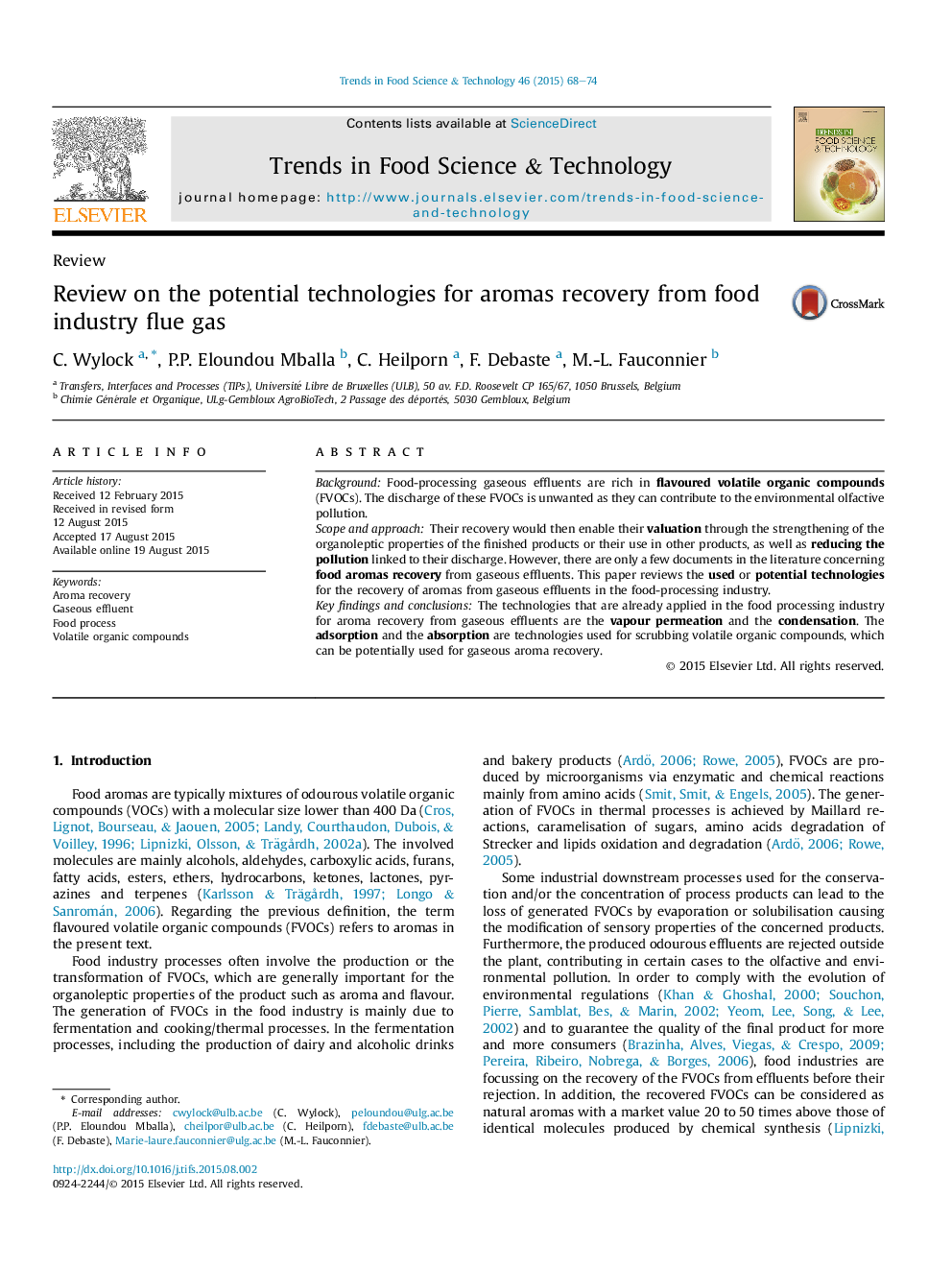| Article ID | Journal | Published Year | Pages | File Type |
|---|---|---|---|---|
| 2098597 | Trends in Food Science & Technology | 2015 | 7 Pages |
•Gaseous effluents treatment usually concerns cleanup before discharge.•Little few information is available on recovery of food aromas from gaseous effluents.•Vapour permeation, condensation, adsorption and absorption work for aroma recovery from gaseous effluents.•The choice of an appropriate technology depends on its technical and financial constraints.
BackgroundFood-processing gaseous effluents are rich in flavoured volatile organic compounds (FVOCs). The discharge of these FVOCs is unwanted as they can contribute to the environmental olfactive pollution.Scope and approachTheir recovery would then enable their valuation through the strengthening of the organoleptic properties of the finished products or their use in other products, as well as reducing the pollution linked to their discharge. However, there are only a few documents in the literature concerning food aromas recovery from gaseous effluents. This paper reviews the used or potential technologies for the recovery of aromas from gaseous effluents in the food-processing industry.Key findings and conclusionsThe technologies that are already applied in the food processing industry for aroma recovery from gaseous effluents are the vapour permeation and the condensation. The adsorption and the absorption are technologies used for scrubbing volatile organic compounds, which can be potentially used for gaseous aroma recovery.
